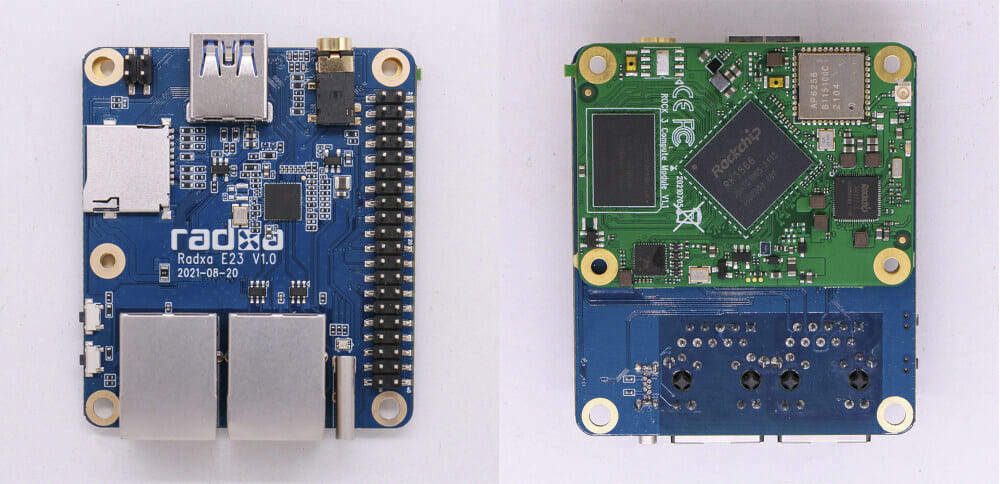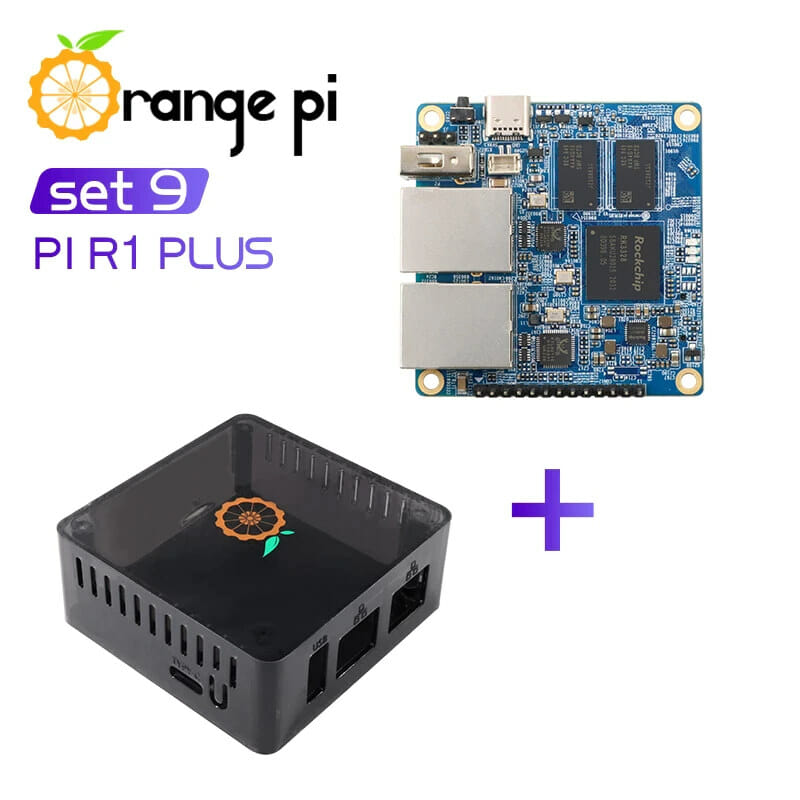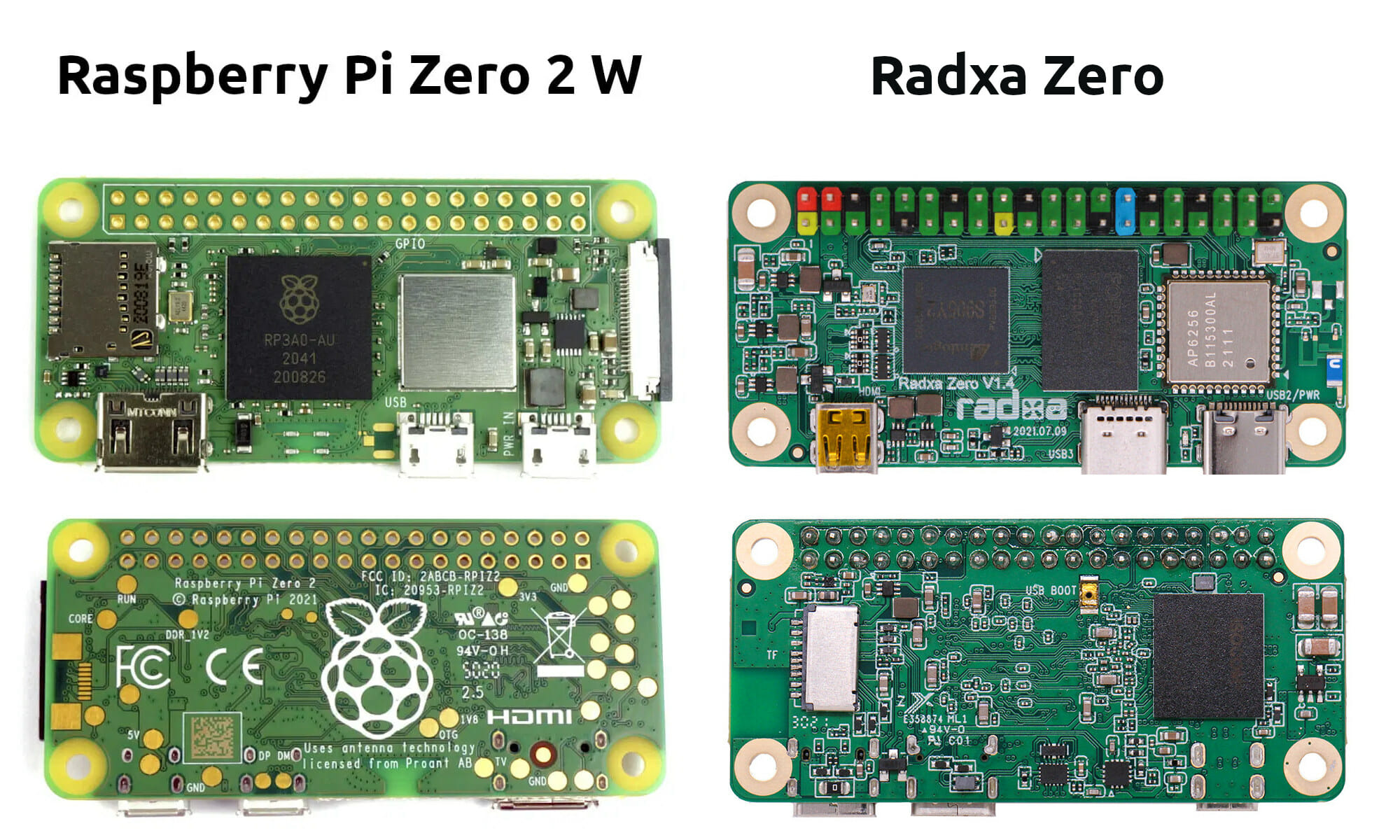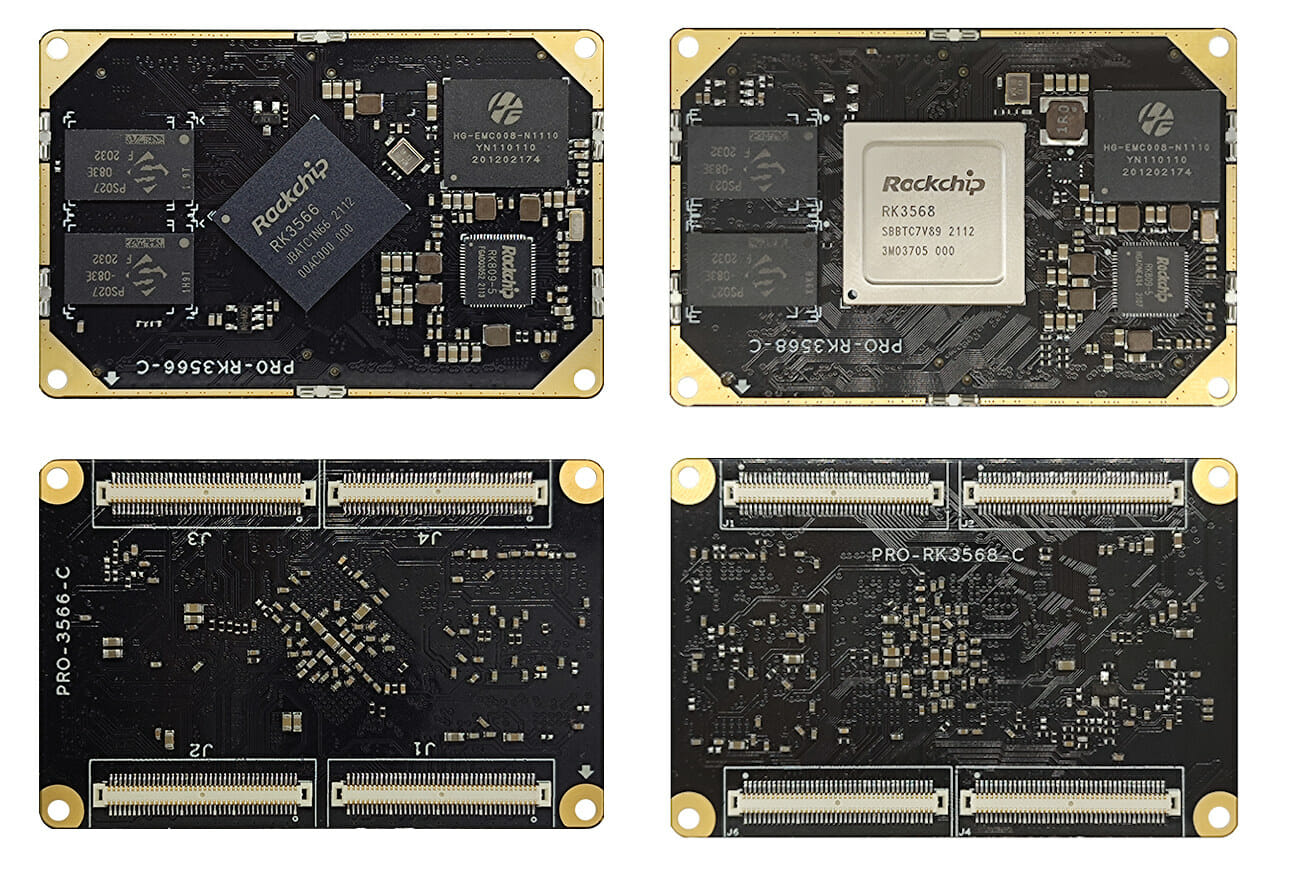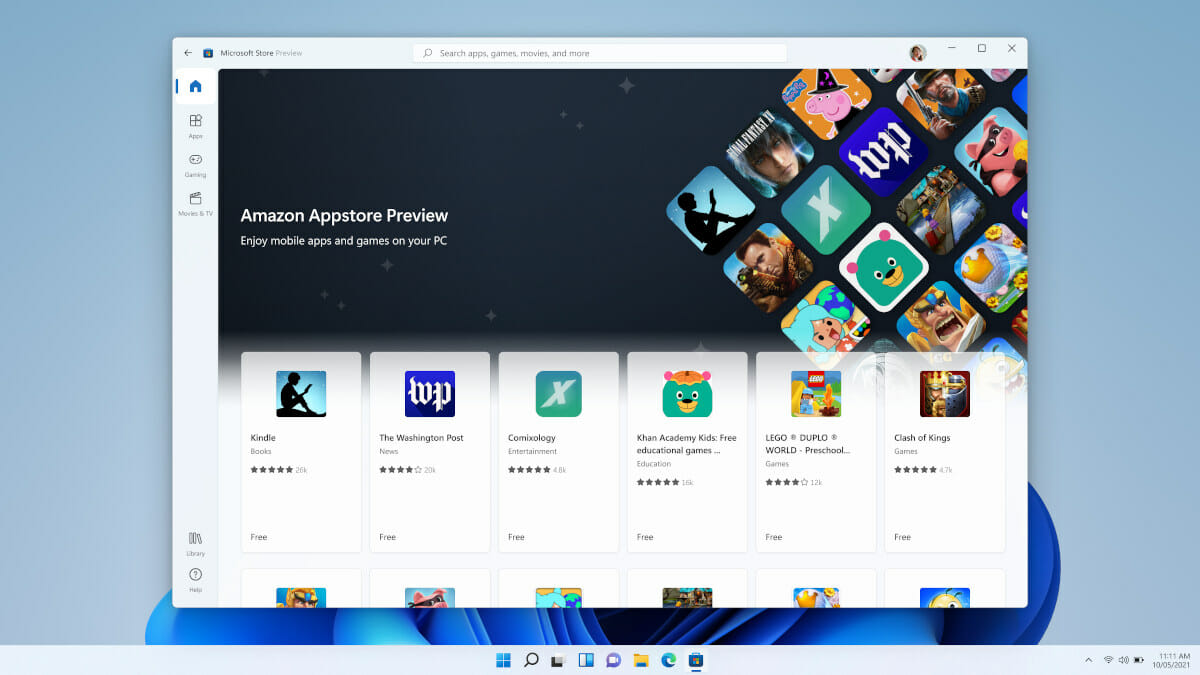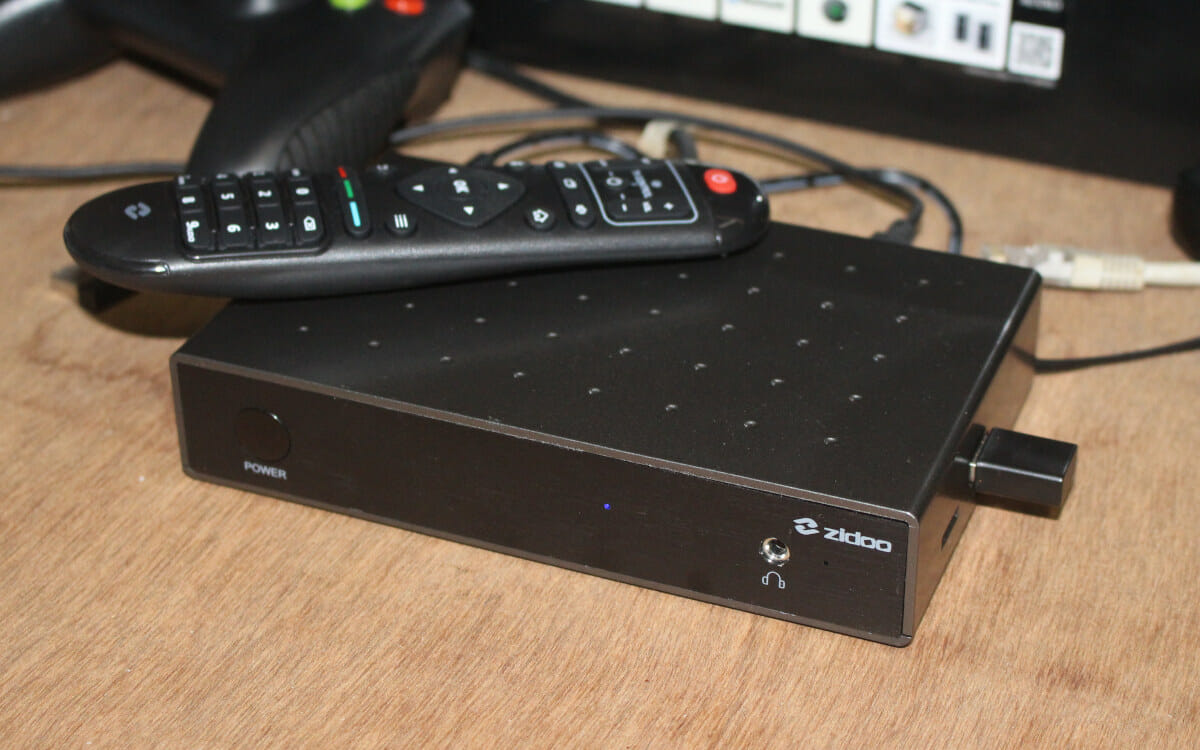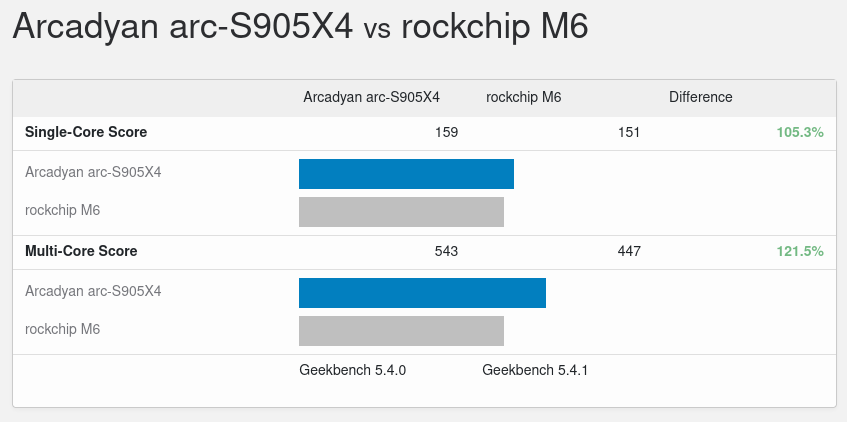Radxa CM3 is a system-on-module that offers an alternative to the Raspberry Pi CM4, with the same form factor allowing it to become a drop-in replacement, but switching from a Broadcom BCM2711 processor to a Rockchip RK3566 quad-core Cortex-A55 SoC. Radxa CM3 will work with existing carrier boards for the Raspberry Pi Compute Module 4, albeit some features such as dual HDMI are not available, instead, providing a single HDMI, but the module also offers extra features through an additional 100-pin board-to-board with interfaces such as SATA III and USB 3.0. Let’s compare Radxa CM3 specifications to the ones of Raspberry Pi CM4. Comparing Broadcom BCM2711 quad-core processor and Rockchip RK3566, as the Cortex-A72 may still be faster on some workloads despite the lower frequency, and some other workloads may be dramatically faster on RK3566, for example for those using Armv8 Crypto extensions missing on all Raspberry Pi, which we […]
Giveaway Week – Orange Pi R1S Kit
Day 4 of giveaway week will be another product sent directly from the manufacturer, as Shenzhen Xunlong Software agreed to send an Orange Pi R1 Plus kit for free to a randomly selected winner. Just like the FriendlyELEC’s NanoPi R2S we’ve offered earlier this week, Orange Pi R1 Plus comes with a Rockchip RK3328 processor and dual Gigabit Ethernet, as well as 1GB RAM. The kit also includes a plastic enclosure. While I did not have the opportunity to test the board myself, James Dawson did, and found both Ethernet ports to achieve close to Gigabit Ethernet speed, with the processor delivering decent performance. Software-size, Shenzhen Xunlong Software provides Ubuntu, Debian, OpenWrt, and even Android images on the resources page, but some people also managed to run the Armbian image for NanoPi R2S or RockPi E boards. To enter the draw simply leave a comment with your country and whatever […]
Raspberry Pi Zero 2 W vs Radxa Zero – Features and benchmarks comparison
The just-announced Raspberry Pi Zero 2 W is not the first quad-core Arm SBC following Raspberry Pi Zero form factor, and back in 2017, the Banana Pi BPI-M2 Zero was introduced for $15, and the Radxa Zero was unveiled last June with an Amlogic S905Y2 SoC with price starting at $15 as well. With its Allwinner H2+ quad-core Cortex-A7 processor clocked at 1 GHz and a price bumped up to $23, the Banana Pi M2 Zero has mostly become irrelevant, but the Radxa Zero may still be considered by some people with a 1.8 GHz processor, and options for up to 4GB RAM, so let’s see how features compare against Raspberry Pi Zero 2 W, followed by some benchmark numbers. Raspberry Pi Zero 2 W vs Raxda Zero – Features If we just look at the comparison table, the Radxa Zero is equivalent or superior in almost every way, except […]
Picovoice Cobra Voice Activity Detection Engine shown to outperform Google WebRTC VAD
Picovoice Cobra Voice Activity Detection (VAD) engine has just been publicly released with support for Raspberry Pi, BeagleBone, NVIDIA Jetson Nano, Linux 64-bit, macOS 64-bit, Windows 64-bit, Android, iOS, and web browsers that support WebAssembly. Support for other Cortex-M and Cortex-A based SoCs can also be made available but only to enterprise customers. Picovoice already offered custom wake word detection with an easy and quick web-based training and offline voice recognition for Raspberry Pi, and even later ported their voice engine to Arduino. Cobra VAD is a new release, and, like other VADs, aims to detect the presence of a human voice within an audio stream. Picovoice Cobra can be found on Github, but note this is not an open-source solution, and instead, libpv_cobra.so dynamic library is provided for various targets, together with header files and demos in C, Python, Rust, and WebAssembly, as well as demo apps for iOS […]
Rockchip RK3566/RK3568 SoM’s feature board-to-board connectors or castellated holes
Rongpin Electronics has designed RK3566 and RK3568 systems-on-modules (SoM) with either board-to-board connectors or castellated holes for direct soldering to the carrier board, which adds competition to the Firefly Core-3568J AI Core Rockchip RK3568 system-on-module offered in a SO-DIMM form factor with an edge connector. The Rongpin Pro-RK3566 and Pro-RK3568 core boards are equipped with four high-speed Hirose connectors, while the RP-RK3568 Core board exposes I/Os through castellated holes around the four sides of the CPU module. Rongpin Pro-RK356x system-on-module & devkit Specifications: SoC – Rockchip RK3566/RK3568 quad-core Cortex-A55 processor @ 2.0 GHz with Arm Mali-G52 2EE GPU with support for OpenGL ES 1.1/2.0/3.2, OpenCL 2.0, Vulkan 1.1, 0.8 TOPS NPU for AI acceleration, 4Kp60 H.265/H.264/VP9 video decoding, and 1080p100 H.265/H.264 video encoding System Memory – 2GB DDR4 (option for 4GB) Storage – 8GB eMMC 5.1 flash (option for 16GB to 128GB) 4x Hirose board-to-board connectors with Storage 1x SATA […]
Windows Subsystem for Android introduced on Windows 11
Following up on the company’s Windows Subsystem for Linux, Microsoft has now introduced the Windows Subsystem for Android that allows Windows 11 users to install Android apps either through the Amazon Appstore or the Microsoft Store. At this time, it is officially reserved for Windows Insiders part of the Beta Channel in the United States on eligible devices running Intel, AMD, and Qualcomm platforms, and at this time 50 apps are available with mobile games such as Lords Mobile, June’s Journey, or Coin Master, the Kindle app for reading books, and kids content that includes Khan Academy Kids and Lego Duply World. More apps are obviously planned, and as I’ll see later there are ways for any Windows 11 users to install Android apps. The Windows Subsystem for Android (WSA) is not installed by default, but it will be automatically installed if you either install the Amazon Appstore, the Amazon […]
Zidoo M6 preview with Android 11
I’ve now had more time to play with Zidoo M6 Arm mini PC powered by a Rockchip RK3566 quad-core Cortex-A55 processor. I intended to review the device with Ubuntu, but I misunderstood, and Android 11 was pre-installed on the device. I was also told since this model is mainly for industrial control, I might want to focus on performance and connectors rather than how well all functions work. So this will not be a review, but rather a preview of Zidoo M6, since as we’ll see below there’s still more work do to fix all issues. As an industrial platform. some features like Google Services may not be needed or even desirable. First boot and Settings I’ve connected a USB keyboard for screenshots, MINIX NEO A2 Lite air mouse, an HDMI cable to my 4K TV, and the power supply to get started. I also add two AAA batteries to […]
Rockchip RK3566 Benchmarks in Android 11 (Zidoo M6)
I received Zidoo M6 last month, a mini PC based on Rockchip RK3566 quad-core Cortex-A55 processor. I initially understood it came with Ubuntu Linux, but actually, it came pre-loaded with Android 11, so I’ve decided to run some benchmarks on the RK3566 device to see how it performs compared to other Arm systems Zidoo M6 system info But before running benchmarks, let’s have a look at some system info with CPU-Z CPU-Z has never heard about RK3566, so it detects it as RK3066, but the rest of the information seems correct with a quad-core Cortex-A55 clocked between 400 MHz and 1.8 GHz, an Arm Mali-G52 GPU, 3775KB RAM, and 24.12 GB internal storage from the 32GB flash. The system runs Android 11 on top of Linux 4.19 which will be supported until December 2024. I can set the video output to 4K, but the UI is still limited to 1920×1080 […]


